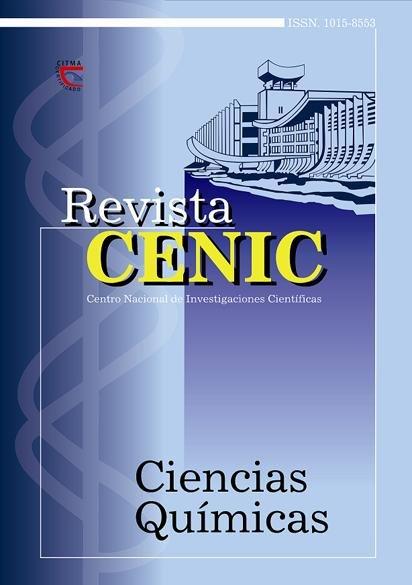The solvent-flush injection technique in the quantitative analysis of fatty acids of very high molecular mass by Gas Chromatography
Abstract
Sample introduction is considered to be the biggest error source in the Gas Chromatographic (GC) analysis. It is because of several phenomena like discrimination in the syringe needle, which cause substantial changes in sample composition. These changes proved to be more remarkable when differences between volatility of the mixture components are greater, and they are reflected on relative mass response factor (fim). For analyzing the influence of the injection technique on the chromatographic behavior of fatty acid methyl esters, several mixtures of standard acids (C24:0, C26:0, C28:0 and C30:0), which are usually present in vegetables waxes, were prepared. The internal standard C19:0 was added to each mixture, they were methylated by acid catalysis using a HCl-methanol solution and were analyzed by GC employing a flame ionization detection. A silanized glass column (3.1 m x 3.0 mmid) packed with 3% OV-101 on 80-100 mesh Chromosorb W (HP) was used and it was proved an influence of speed and injection technique on fi
m. A remarkable increase of fim with decreasing of injection speed and with chain length was observed when conventional injection technique was employed. Solvent-flush proved to give more precise results than conventional injection technique and molecular mass become less dependent on fim, which evidence a decreasing discriminative effect. A good correlation between the responses and the injected masses was also found in the whole studied range, 0.5-2µg, with correlation coefficients > 0.99. The zero was included in the confidence limits of intercepts; therefore, the determination did not present bias.

Downloads
Published
How to Cite
Issue
Section
License
Copyright (c) 2002 Copyright (c) 2002 Revista CENIC Ciencias Químicas

This work is licensed under a Creative Commons Attribution-NonCommercial-ShareAlike 4.0 International License.
Los autores que publican en esta revista están de acuerdo con los siguientes términos:
Los autores conservan los derechos de autor y garantizan a la revista el derecho de ser la primera publicación del trabajo al igual que licenciado bajo una Creative Commons Atribución-NoComercial-CompartirIgual 4.0 que permite a otros compartir el trabajo con un reconocimiento de la autoría del trabajo y la publicación inicial en esta revista.
Los autores pueden establecer por separado acuerdos adicionales para la distribución no exclusiva de la versión de la obra publicada en la revista (por ejemplo, situarlo en un repositorio institucional o publicarlo en un libro), con un reconocimiento de su publicación inicial en esta revista.
Se permite y se anima a los autores a difundir sus trabajos electrónicamente (por ejemplo, en repositorios institucionales o en su propio sitio web) antes y durante el proceso de envío, ya que puede dar lugar a intercambios productivos, así como a una citación más temprana y mayor de los trabajos publicados (Véase The Effect of Open Access) (en inglés).













